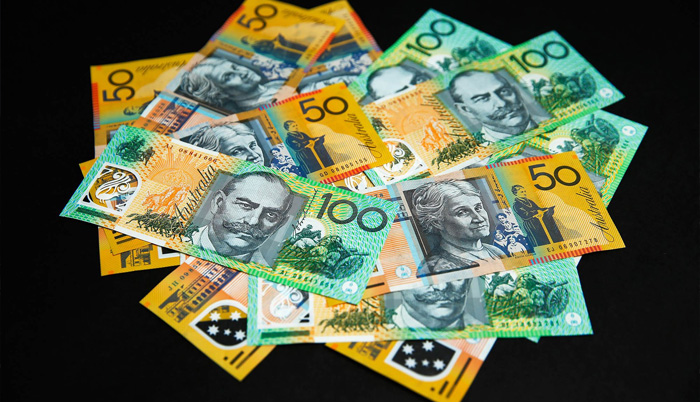![]() Home > World Business
Home > World Business
Aussie Dollar Gives Reserve Bank A Rate Hike It Doesn't Want

Photographer: Brendon Thorne/Bloomberg
![]() July 20th, 2017 | 07:31 AM |
July 20th, 2017 | 07:31 AM | ![]() 1329 views
1329 views
AUSTRALIA
The central bank may regret this week's transparency.
Aussie firms fretting over talk of interest-rate hikes could be feeling like they've just had one -- thanks to a spiraling currency.
The average value of the Australian dollar against a basket of other currencies, known as the trade-weighted index, has climbed 6.5 percent since the start of June. It takes just a 5 percent increase to inflict the same economic impact as a quarter-point hike in the Reserve Bank of Australia's cash rate, according to Paul Bloxham, chief economist for Australia at HSBC Holdings Plc, who previously worked at the central bank.
The comparison suggests the Aussie's ascent could start to hamper the nation's economic transition. Since last year, the RBA has repeated a refrain that the currency’s slump since 2013 has helped industries outside mining; but that an appreciation "could" or "would" complicate an adjustment toward services and manufacturing. The two main levers for tightening and loosening conditions in the Australian economy are interest rates and the floating exchange rate.
“The RBA would certainly prefer a lower currency due to its positive impact on GDP and the economically beneficial realignment of investment and activity that it should deliver,” said Sean Keane, an Auckland-based analyst at Triple T Consulting. “What the higher currency will do, however, is take away some of the additional stimulus that the RBA and Australian Treasury may have been factoring in towards the end of this year and into next.”
Since the RBA first warned on the Aussie `complication' last April, the currency has generally held in a range of 73 U.S. cents and 77 U.S. cents. With a spike in commodity prices last year, policy makers appeared fairly relaxed about the currency's level -- while they would have liked it lower, they could live with it. But with the Aussie now near 80 U.S. cents, it's moving into new territory.
Ironically, the RBA gave the currency's comeback a helping hand Tuesday by detailing a board discussion in the minutes of this month’s policy meeting. It estimated the level of the neutral cash rate -- where output growth is at potential and inflation stable -- at 3.5 percent, or two percentage points above the current record-low cash rate. Traders appeared to extrapolate that if policy makers are discussing that, then they must be discussing rate increases.
Some economists including Commonwealth Bank of Australia's Gareth Aird said they didn't interpret the minutes' discussion as a signal of imminent hikes, with most expecting the RBA to stay on hold for the rest of this year. Markets predict a 60 percent chance of a hike in the first half of 2018.
The real test for rate increases is whether the RBA’s forecasts for the economy -- growth accelerating to 3 percent and inflation meeting its 2 percent to 3 percent target -- are likely to come to pass. Thursday’s jobs report, a speech from RBA Deputy Governor Guy Debelle on Friday and second-quarter inflation data next Wednesday are lining up as trigger points.
Source:
courtesy of BLOOMBERG
by Michael Heath
If you have any stories or news that you would like to share with the global online community, please feel free to share it with us by contacting us directly at [email protected]